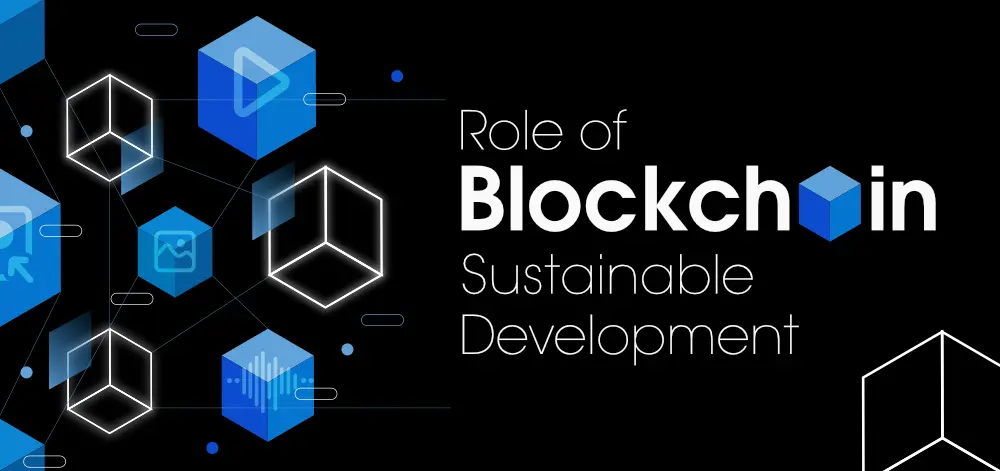Increasing concerns about climate change are driving the rise of new technologies that help reach global sustainability goals. When it comes to these, sustainable blockchain is notable as it layers inspections, good performance, and sustainability together. We discuss in this article how sustainable blockchain is transforming the way green business works and the carbon credit markets, leading to a cleaner environment.
What is Sustainable Blockchain?
Essentially, sustainable blockchain is blockchain technology made to have less effect on the environment and offer the highest possible support for people and the environment. There is criticism of traditional blockchains because those using PoW need a lot of energy and release a large amount of carbon. By making use of PoS, DPoS, and other new protocols, sustainable blockchain reduces energy usage compared to traditional blockchains.
Blockchain networks that put energy efficiency first illustrate that safety and decentralization can be achieved without causing harm to the environment. Shifting to sustainable blockchains is important to
and to the protection of the environment.
How Sustainable Blockchain Supports Green Initiatives
A great advantage of sustainable blockchain is that it fosters different green initiatives. As an example, blockchain-backed decentralized energy markets make it possible for producers and consumers to buy and sell renewable energy quickly. In this way, communities can get involved, and using clean energy is promoted faster.
Also, because of green blockchain, claims about sustainability are easier to verify. Being based on blockchain, information about renewable energy, carbon, and eco-friendly certificates is recorded and checked safely. Because of this transparency, greenwashing is stopped and there is more trust among both consumers and investors.
Sustainable blockchain technology improves the environmental friendliness of the supply chain. Blockchain ensures that, thanks to tracking, both the environment and ethical standards are maintained all along the supply chain. Being able to track each step in the supply chain gives companies an incentive to go green and helps consumers shop for eco-friendly products.
Transforming Carbon Credit Markets with Blockchain
The carbon credit market is used worldwide to limit greenhouse gas emissions. Still, the main problems with traditional carbon credit systems are their fragmentation, poor visibility, and the risk of double counting. Here is where blockchain carbon credits provide a solution.
When carbon credits are tokenized on a blockchain, each one can be easily tracked and identified from start to finish. Consequently, it eliminates fraud and helps the market improve its operations. Smart contracts set up by blockchain platforms verify that carbon offset projects bring real improvements before any credits are issued or dealt with in the market.
The open and secure approach to carbon credit trading makes it possible for even more companies and investors to participate and take action on reducing their carbon footprints.
The Role of Blockchain in Green Finance
With blockchain green finance, the way sustainable investments are handled is being updated. Because transparency and accountability are increasingly important to investors when it comes to ESG metrics, blockchain fulfills this requirement to a great extent.
Having all transactions and information related to sustainability claims stored in a decentralized way by blockchain, investors can feel more secure. Also, if solar farms or wind farms are tokenized, more people can buy a small part of these businesses for investment, not just large-scale investors.
Smart contracts simplify green finance by handling the release of funds and monitoring whether rules are adhered to. Because of this, investments contribute to environmental sustainability, quickly attracting more investment to helpful projects.
Why Blockchain Energy Efficiency Matters
How much power blockchain uses has become a key worry for those looking at its environmental effect. Even so, sustainable blockchain networks are confirming that it is possible to achieve blockchain energy efficiency while preserving security and decentralization.
When these networks use PoS and similar low-energy consensus techniques instead of PoW, their overall impact on the environment is greatly lowered. As a result of this change, the blockchain is becoming more environmentally friendly and inspiring more people to use blockchain for eco-friendly purposes.
When blockchain is more energy-efficient, it becomes a good choice for those who want to contribute to environmental improvement.
Conclusion:
The increase in sustainable blockchain shows how technology is becoming more responsible for the environment. Sustainable blockchain solves the challenge of climate change by improving green initiatives, increasing the transparency of carbon markets, and modernizing green financial services.
Due to its decentralized, efficient, and clear properties, it can well serve the global mission for sustainability. The widespread uptake of eco-friendly blockchain protocols by networks and efforts by industries to adopt sustainability are making the dream of a green blockchain a reality.
When we apply sustainable blockchain, we not only introduce new technological ideas but also take steps to make sure blockchain and the environment move forward together, protecting what we have.

